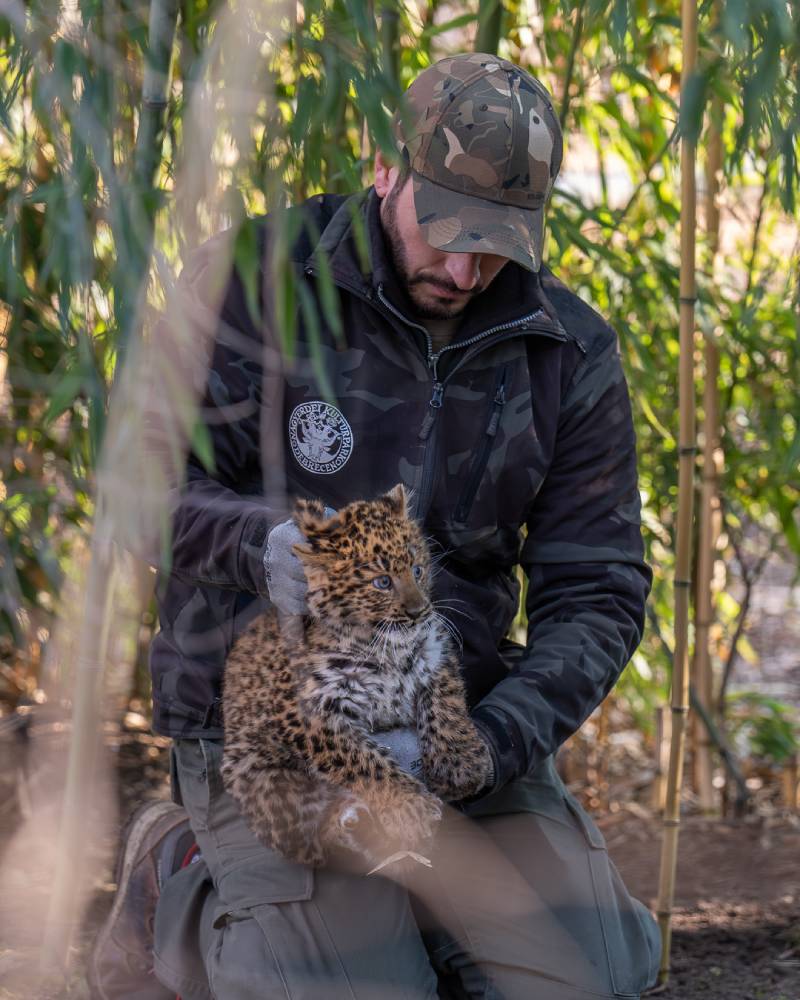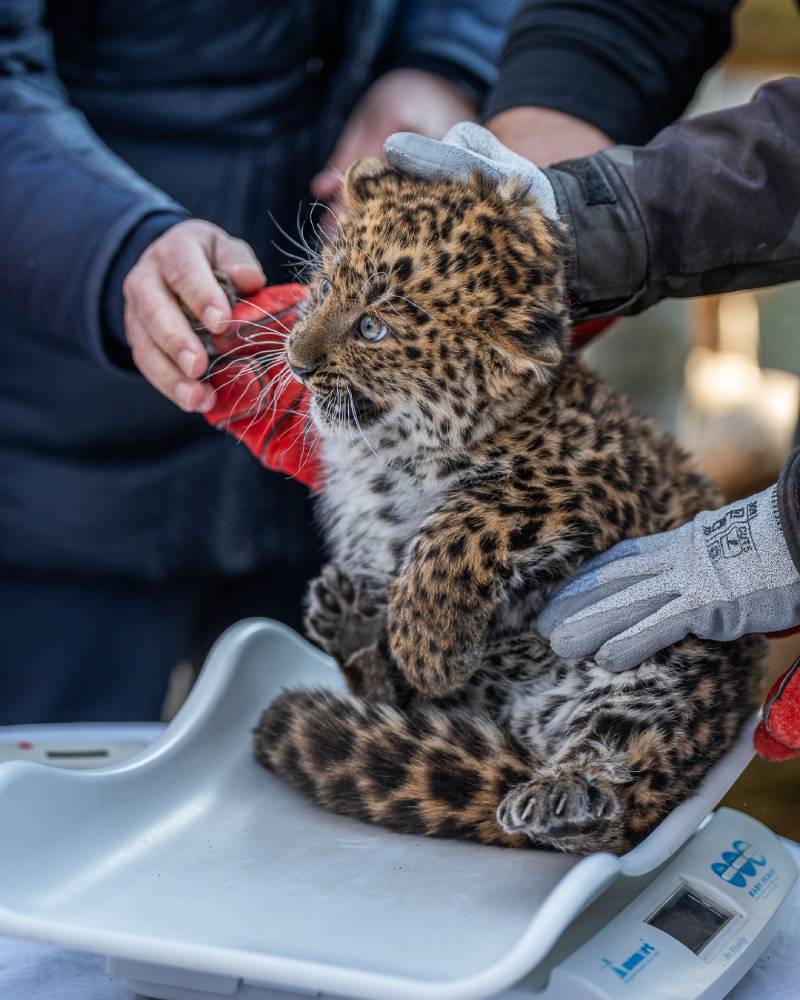Hungary’s fist zoo outside the capital has some great and long-awaited news to share with the birth of a North Chinese leopard cub on November 21, 2023, as the first offspring born to Coolio and Jilin since they were introduced to each other in autumn 2022.
The little one has been thriving in the past couple months with increasing visibility and was found out to be a female during her first ever veterinary examination earlier today. Soon to be named with the help of the public on Zoo Debrecen’s Facebook page, the cub weighing 3100 grams can now be spotted in the afternoons as she gets more and more familiar with the winter environment.


Zoo Debrecen has been a safe haven for North Chinese leopards for two decades, with its late breeding pair, Szépfiú (“Pretty Boy”) and Tschunja, having contributed to the growth of the European zoo population four times. Keepers have some wild stories to tell about leopards like how a female dog ended up becoming a wet nurse to the cub born in 2009. Another fun fact is that Coolio was actually fathered by the very first Debrecen-born North Chinese leopard in Ree Park Safari, Denmark, whose granddaughter now marks a continuation of this genetically valuable bloodline.

North Chinese leopards (Panthera pardus japonensis) are one of the northernmost leopard subspecies, with a considerably larger size and denser fur than their tropical cousins. They primarily feed on larger prey such as wild boar and deer, but occasionally on birds and rodents as well. Except for their breeding season in winter and maternal care for the young, they are solitary and highly territorial. Although they have the largest distribution out of all big cat species spanning from most of Africa to South and East Asia, leopards now face extinction due to habitat fragmentation and poaching, hence their overall Vulnerable status in the International Union for the Conservation of Nature’s (IUCN) Red List. Certain subspecies are at an even greater risk, with North Chinese leopards having dwindled down to an estimate of little over 300 individuals in the wild while zoos around the globe are home to a total conservation population of now 55 in an attempt to help save them.